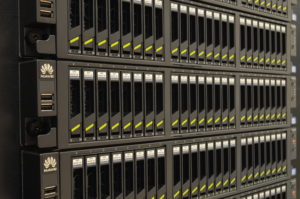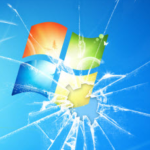One of the responsibilities of the Technical Coordinator in the Ohio Section is to submit something for the Section Journal. The Section Journal covers Amateur Radio related things happening in and around the ARRL Ohio Section. It is published by the Section Manager Scott – N8SY and articles are submitted by cabinet members.
Once my article is published in the Journal, I will also make it available on my site with a link to the published edition.
You can receive the Journal and other Ohio Section news by joining the mailing list Scott has setup. You do not need to be a member of the ARRL, Ohio Section, or even a ham to join the mailing list. Please sign up!
If you are an ARRL member and reside in the Ohio Section, update your mailing preferences to receive Ohio Section news in your inbox. Those residing outside the section will need to use the mailing list link above.
Updating your ARRL profile will deliver news from the section where you reside (if the leadership chooses to use this method).
Go to www.arrl.org and logon.
Click Edit your Profile.
You will be taken to the Edit Your Profile page. On the first tab Edit Info, verify your Email address is correct.
Click the Edit Email Subscriptions tab.
Check the News and information from your Division Director and Section Manager box.
Click Save.
Now without further ado…
Read the full edition at:
THE TECHNICAL COORDINATOR
Jeff Kopcak – TC
k8jtk@arrl.net
Well, this stay at home thing seems to have run its course – beginning week 11 soon. Unless you’ve been under a rock, you know by now Dayton Hamvention was canceled this year. First time ever in its history. Weekend events that had the resources were virtualized such as Contest University. Some vendors and manufactures ran Dayton specials regardless of the lack of a physical showing. Technical Specialist Bob – K8MD pointed out that one of the retailers ran a special on D-STAR repeater components for $299 apiece. That meant a full stack (controller, 2m voice, 440 voice, 1.2G voice, and 1.2G data) could be purchased for about $1,500. Wow. Just ONE of those items cost about that much retail. Is ICOM feeling the pressure from the Yaesu repeater giveaway, DMR, or is D-STAR II around the corner? Hmmm…
Unfortunately, I’m starting to see on-the-air happenings return to previous levels. I guess that means people are returning to work, going out more, and returning to their normal. For me, I knew early on I wanted to utilize the hunker-in-place order to knock out some long-standing projects and “to-dos” of mine. Others had the same idea.
 Among my list of annoying issues was a problem with one of my Fedora systems. As I’ve written about in the past, I made the switch to Fedora Linux as the primary operating system on my desktop and laptop. Fedora is a cutting-edge operating system and employs a very aggressive release and end-of-life schedule. The project releases a new version twice a year in April and October. When a new version drops, they mark the version two behind it as end-of-life. Fedora 30 released in April of 2019 means Fedora 28 went end-of-life one month after that date, May 2019. No bug fixes, no package updates, no security enhancements. And everyone complains about Microsoft ending life of a 10-year-old OS. Well, I knew what I was getting into.
Among my list of annoying issues was a problem with one of my Fedora systems. As I’ve written about in the past, I made the switch to Fedora Linux as the primary operating system on my desktop and laptop. Fedora is a cutting-edge operating system and employs a very aggressive release and end-of-life schedule. The project releases a new version twice a year in April and October. When a new version drops, they mark the version two behind it as end-of-life. Fedora 30 released in April of 2019 means Fedora 28 went end-of-life one month after that date, May 2019. No bug fixes, no package updates, no security enhancements. And everyone complains about Microsoft ending life of a 10-year-old OS. Well, I knew what I was getting into.
Fedora 31 released at the end of October, 2019. I usually wait 2-3 months for the major problems to be ironed out and updates made available before I upgrade. When I tried to update to 31, I ran into a problem. Using the Fedora 31 Live CD or doing the automatic upgrade, the boot process would hang on this line:
A start job is running for Monitoring of LVM2 mirrors, snapshots etc. using dmeventd or progress polling
This process neither finished loading nor failed to load after any amount of time. Off to the Internet I went. Searching “Fedora 31” and the message above brought me to a couple bug reports and forum posts about the same message. Unfortunately, none of the suggestions got me past this problem. Due to life and other responsibilities, I put it aside secretly hoping Fedora 32 would have fixed my problem, saying I would upgrade from 30 to 32. I saw Fedora 32 beta was available (now a full release) and downloaded the Live CD. Problem still existed. Darn!
Since this occurred during the boot process of both the Live CD and after upgrading a previous installation, I couldn’t look or pull stored logs easily to see if those provided any clues as to why the process was hanging. Live CD images are the lifeline go-to when the installed OS on the hard drive wont boot. In addition to installing the OS, they are used as a rescue method to repair a borked install. I couldn’t get the Live CD to boot so I was in trouble if this system ever became unbootable because I’ve never *cough* have done something that *cough* *cough* caused my system to become unbootable…

The forum post above gave me a clue and I started exploring this as being an issue with my RAID array. RAID stands for Redundant Array of Inexpensive (or Independent) Disks. It’s a technology that combines multiple physical disks into logical units for redundancy, performance, or both. I tried messing around in the BIOS disabling other arrays, that didn’t work. I thought maybe something in the RAID information written to the disk was causing a problem. Backed up everything on the array and deleted it. Deleting a RAID array destroys all data on those disks!! When I recreated the array, the Fedora 31 Live CD booted! Problem solved!!? Yeah, no. It would boot successfully once then hang on subsequent reboots or after being installed to the hard drive.
After screwing around with it even more, I finally searched “Fedora 31 Intel RAID array LVM2 dmeventd” and found this bug report and how to work around the exact issue I was having. Whoo Hoo! Problem solved, well workaround provided. It took a while to get there. Simply searching a message, error, or problem may not return the most relevant search results for your issue. You might have to dig at it a bit by gathering other information to determine the real reason or peel back the right layer to discover the correct answer.
Work around involved masking the lvm2-lvmpolld.service via kernel load parameters and at the command line after install. Masking creates a link to the Linux blackhole /dev/null device so the service cannot be started by systemd or dependencies. The service is a polling system for the Logical Volume Manager (LVM). After all that, I was finally able to get Fedora upgraded to 31! Just in time as version 30 was about to go EOL. I noticed the data consistency validation scan no longer automatically occurs on the arrays, which is likely related to disabling the service. I initiate it manually every couple of weeks. The problem of not being able to boot has an active bug report that’s assigned. Hopefully gets attention from a developer and fixed.
Windows 7 Users: Take Heed

It’s become more imperative that you move to another operating system like Windows 10, Linux, or utilize a 3rd party patching service like 0patch. Unlike Windows XP’s end-of-life, there were not too many critical issues shortly after EOL. Microsoft did release patches for ‘really bad’ issues. XP, and any OS, always have an unknown number of undiscovered security problems. We were not so fortunate to run with Windows 7 as long without discovering major problems. There have been a number of significant critical issues each month since Windows 7 went EOL that affect Windows 7, 8, and 10, for which Microsoft has not (and likely will not) patch Windows 7.
My February OSJ article has information about how issues can affect ‘all versions of Windows’ and information on 0patch. March OSJ article covers upgrading to Windows 10 for free and check my Linux information article for choosing a Linux distribution. A reader previously tried to argue that exploits resided in browsers. Since the last official update for Windows 7 in January, these critical exploits are largely operating system based: ActiveX, Windows Installer, Graphics Interface, font rendering, and shortcut handling (.lnk files) with many being 0-day, meaning they are actively exploited in the wild. Could be a result of someone that has physical access to the machine, an application the user thinks are legitimate or an app that comes bundled with crapware/malware, or polled by an infected device on the network.
This month alone, 111 security holes were patched, 16 being critical, in supported Windows operating systems. Makes you wonder why anyone is still using a Microsoft Windows OS. Lack of software support and learning curve are probably the biggest. I have a few uses for Windows, ugh – thank you streaming services and your stupid ‘copy protection.’ Microsoft is looking at ‘containerizing’ the Win10 operating system. The belief being when a software component fails to update or creates a problem, it doesn’t affect other parts or crash the entire operating system – separate containers that only affect themselves. Or maybe Microsoft should focus on getting the operating system stable instead of “feature updates” no one cares about. </end rant>.
AmateurLogic.TV Sound Check Net
One of the nets created since the stay-at-home order is the Amateur Logic Sound Check Net. Amateur Logic.TV is a long-running monthly podcast featuring the latest in ham radio. There have been 5 nets so far. I became involved with the net because they wanted the ability to link D-STAR and DMR users to their EchoLink net. I was able to offer up my Digital Voice Multi-mode Interlink System Hub. Started utilizing only those three modes but quickly expanded to incorporate all. Users have checked in using all the modes each week, including Wires-X.

The AmateurLogic guys are using a local repeater in Mississippi connected to an Echolink node. I connect to their Echolink node and transcode audio to and from other modes: AllStar Link, Hamshack Hotline, D-STAR, DMR, YSF, and Wires-X. It has performed well as it mostly lives in the cloud and has data center level resources. Users and sponsors of the net have been impressed with how well it works and grateful to experiment with many modes to reach the net – one of the few, if not only, taking Hamshack Hotline checkins.
I was net control MC for a couple of their nets. It was my longest and most amount of checkins with about 40 at nearly 2 hours for a net. The net is on Tuesdays at 9pm eastern and should be running for at least a couple more weeks. Net can be reached by connecting to any of my hub nodes or checking ALTV social media for other connections. Everyone is welcome!
Thanks for reading and 73… de Jeff – K8JTK
